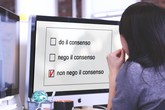How teachers track homework copied from the Internet

Which student hasn’t been tempted at least once to copy a few lines from a reference work, just to save some time? But now, with the development of the Internet, plagiarism has taken on a whole new dimension. While until its advent it was necessary at least to take the time to search and copy the source, leafing through an encyclopedia, summarizing its contents, now a simple copy and paste is enough.
This happens both when it comes to a thesis and in the case of a small presentation, and so, in the face of the rise of this phenomenon, the professors have begun to react. With a lethal weapon: the plagiarism tools. This service allows teachers to highlight the similarities between an assignment presented by a student and all sources available on the Internet.
Such software works as a meta-engine that will in a sense follow the same path as a student in the documentation phase. The goal is to end the culture of copy and paste: learning is not that. The aim of the search for sources and the production of content is to develop personal analyzes and synthesis works that relate the texts from which one has drawn with the implementation of singular experiences drawn up according to one’s own background and stimulation of lateral thinking. .
And such tools help to guide teachers in the right direction, in the discovery and detection of these contents more or less freely inspired by others previously written. Depending on the size of the Word, PowerPoint or PDF document, its analysis takes a few minutes. The verdict then appears as an overall percentage that estimates the plagiarism rate. But this is by no means an automatic fix. The analysis is limited to bringing out the similarities. So the question remains the same: what tolerance to accept and to what degree there is plagiarism?
There is no critical percentage. The software highlights what they consider plagiarism, in principle up to 94%, but it is the teacher who is in control. He may believe that this or that paragraph is not strictly speaking plagiarism. This can obviously depend on the topic: in law subjects, students must necessarily cite articles from the code. So it all depends on the work required. It is up to the teacher to determine the rate of plagiarism that he deems acceptable. You may have the case in which there is 80% plagiarism, but where the work consisted precisely in compiling the best references on the subject. So the overall plagiarism rate means nothing.
Teachers agree, however, that below a 10% similarity rate, the work can be considered personal. It is obvious that writing that “the depreciation of the dollar strengthens the price policy” cannot be considered plagiarism. It is necessary to distinguish ten consecutive words and the moment when it becomes a copy of the entire paragraph. This tolerance of 10% covers the right of citation – which is in fact protected – and accidental similarities.
Those who use these systems antiplagio online therefore they do not intend to deprive students of the right to cite. Quotations are not reprehensible in themselves, but students must abide by the rules and, when using quotations, they must be explicitly identified as such. It is a question of working method. And whatever the university or institution, the citation rules are universal: put the text in quotation marks and add a footnote indicating the source.
Before the advent of these software, teachers generally relied on Google: a few words typed into the search engine allowed them to find the source. The software now make cross-checking easier, faster and more systematic.